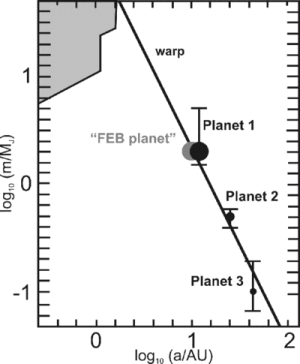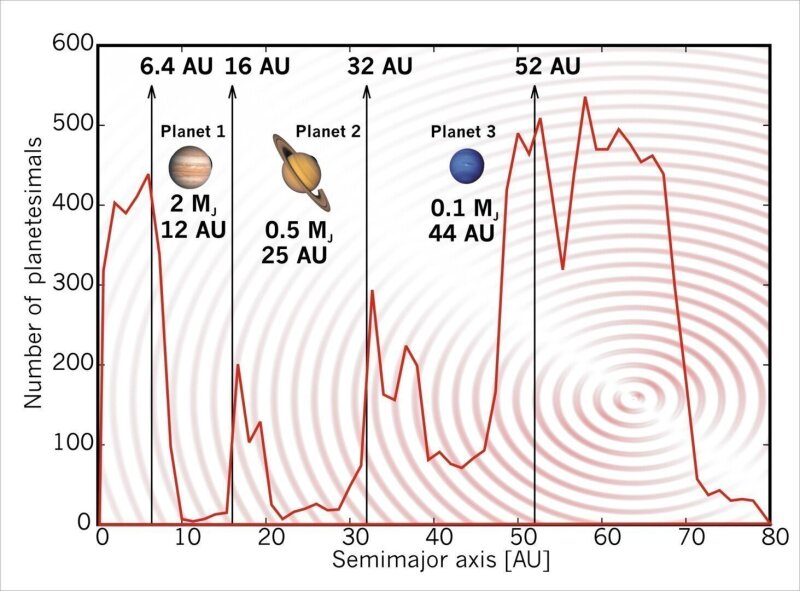Planets for β Pictoris?
log(a)-log(m) phase space for alleged β Pic planet(s). The regions where radial velocity studies exclude a planet are shown in grey (Galland et al. 2006). Line: a planet that could cause the observed warp (Mouillet et al. 1997). Grey circle: the "FEB-planet" of Beust & Morbidelli (2000). The positions of three planets suggested by our study are shown with black circles with vertical error bars reflecting the uncertainty in the planet masses. Horizontal error bars would be indistinguishably small and therefore are not shown.
Grafik: Freistetter et al. 2007Observations have revealed a large variety of structures (global asymmetries, warps, belts, rings) and dynamical phenomena ("falling-evaporating bodies" or FEBs, the "β-Pic dust stream") in the disc of β Pictoris, most of which may indicate the presence of one or more planets orbiting the star. Because planets of β Pic have not been detected by observations yet, we use dynamical simulations to find "numerical evidence" for a planetary system. We show that already one planet at 12 AU with a mass of 2 to 5 MJup and an eccentricity below roughly 0.1 can probably account for three major features (main warp, two inner belts, FEBs) observed in the β Pic disc. The existence of at least two additional planets at about 25 AU and 45 AU from the star seems likely. We find rather strong upper limits of 0.6 MJup and 0.2 MJup on the masses of those planets. The same planets could, in principle, also account for the outer rings observed at 500–800 AU. See Freistetter et al. 2007Externer Link.

